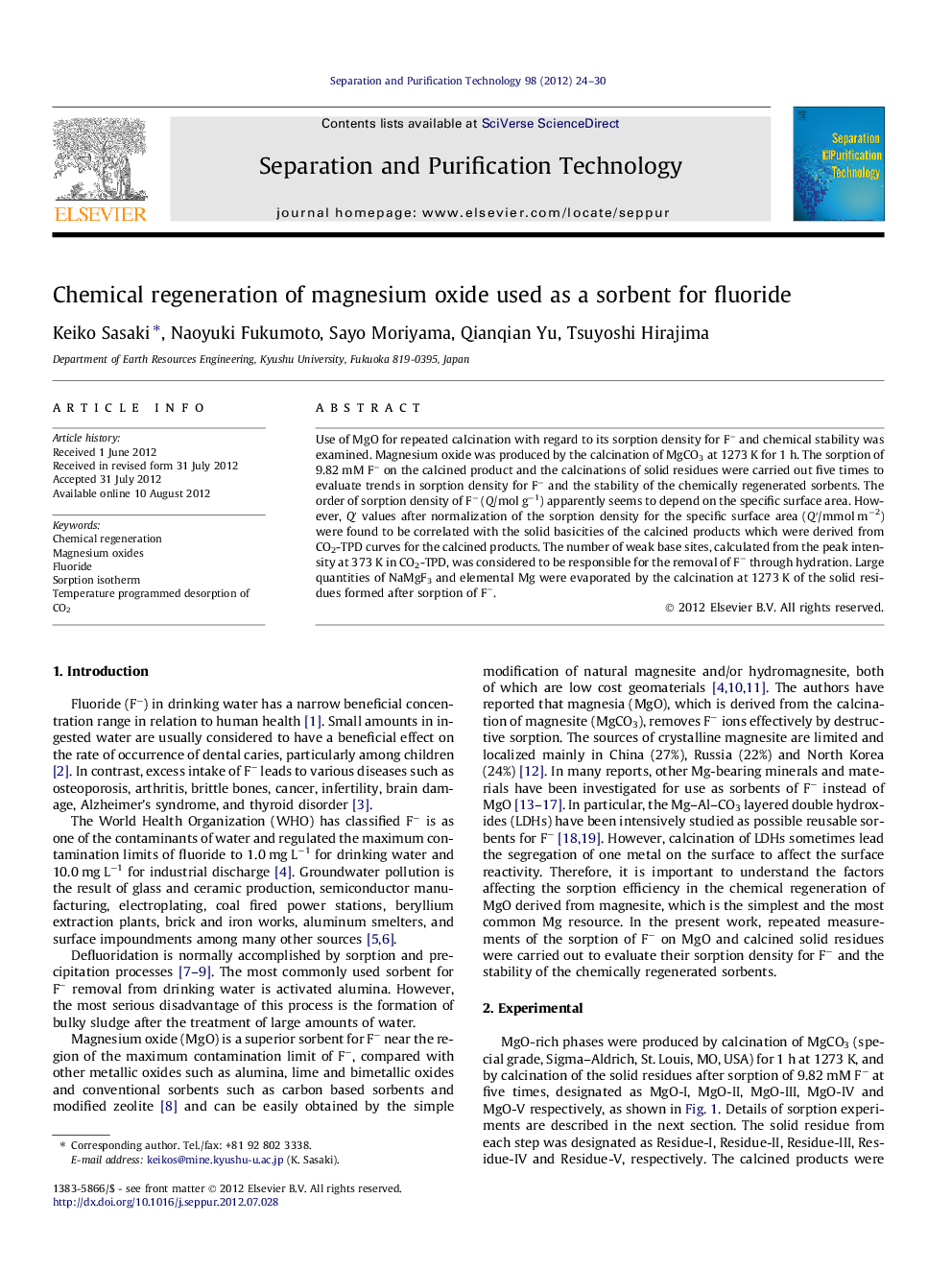| Article ID | Journal | Published Year | Pages | File Type |
|---|---|---|---|---|
| 641999 | Separation and Purification Technology | 2012 | 7 Pages |
Use of MgO for repeated calcination with regard to its sorption density for F− and chemical stability was examined. Magnesium oxide was produced by the calcination of MgCO3 at 1273 K for 1 h. The sorption of 9.82 mM F− on the calcined product and the calcinations of solid residues were carried out five times to evaluate trends in sorption density for F− and the stability of the chemically regenerated sorbents. The order of sorption density of F− (Q/mol g−1) apparently seems to depend on the specific surface area. However, Q′ values after normalization of the sorption density for the specific surface area (Q′/mmol m−2) were found to be correlated with the solid basicities of the calcined products which were derived from CO2-TPD curves for the calcined products. The number of weak base sites, calculated from the peak intensity at 373 K in CO2-TPD, was considered to be responsible for the removal of F− through hydration. Large quantities of NaMgF3 and elemental Mg were evaporated by the calcination at 1273 K of the solid residues formed after sorption of F−.
Graphical abstractFigure optionsDownload full-size imageDownload as PowerPoint slideHighlights► Use of MgO in repeated calcination regarding its sorption of F− and chemical stability was tested. ► The principal mechanism to immobilize F− is based on formation of Mg(OH)2. ► The basicity of MgO was considered to be responsible for the removal of F− through hydration. ► NaMgF3 and Mg were evaporated by the calcination at 1273 K of the solid residues after sorption of F−.
